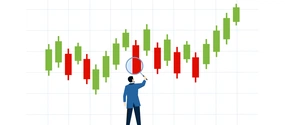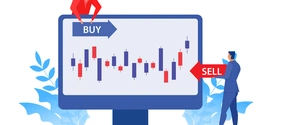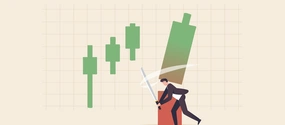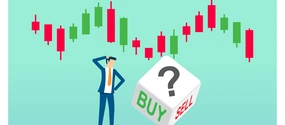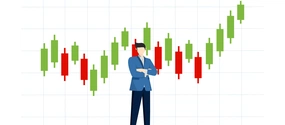Exclusive Gold Price Analysis

Trump vs. Powell: A High-Stakes Game of Economic Chicken
Can Trump fire Powell? Is gold price going to soar even more?

Gold Closing Fast on 3533 Target
A 3533.90 ‘Hidden Pivot’ target has been our lodestone in gold since February when quotes were hovering around 2800.

Déjà Vu in the USD Index: 2018 Mnuchin Moment Mirrors Today's Tariff Tumble
Have you noticed the striking parallel between what's happening with the USD Index right now and what we saw in early 2018?

Are the Corrections Over? Or Are the Rallies Just Starting?
It turns out that we cashed in profits in SPXL pretty much at the short-term top – congratulations once again.

Stocks, Gold Rebound as Expected – What’s Next?
The current market turmoil may be scary, or it might be profitable – and it’s connected with how able you are to take action in this environment.

Extra Trading Opportunity That Very Few Know About
As gold soars to new heights, the decline of copper reveals a hidden opportunity in the market.

Perfect Confirmations from Miners
Wow! If you were waiting for a really clear sell signal for miners – this is it.
Gold Price Analysis
Gold: Key Breakout Zones to Watch After Bearish Reversal
Are we heading for a breakout or another rejection?
The $3,500 Top in Gold and the Upcoming Slide in Commodities
Trump blinked. Just like I’ve been expecting him to, based on his previous approach to negotiations. This is profound.
Gold Not Stopping. New ATH on the Horizon
Despite the holiday lull, gold continues its bullish momentum, breaking through resistance levels.
Bare Naked Facts About Fed Independence
Chair Powell has been particularly vocal about the Fed's independence lately.
Expert gold analysis
Today, gold stocks continue to hold immense value, not just as a financial asset and a hedge against economic instability, but also as a cultural and symbolic entity. Gold is way more than just a metal. Gold's presence in technology, space exploration, and medicine, alongside its traditional roles in jewelry and investment, reflects its enduring legacy. Gold is more than a metal.
At Gold Price Forecast, we live and breathe gold. Or, on the more tech-savvy side, we analyze it, discuss it, and provide you with the best information and insights so that you can benefit from buying and selling gold stocks.
Get to know gold better
Gold has always carried special meaning for humans. From the Egyptians to the Inca, civilizations across the world revered gold not just for its beauty but also as a symbol of power and divine grace. The Egyptians, for instance, believed gold was the flesh of the gods, and used it extensively in their sacred tombs and temples.
Economically, gold played a crucial role in shaping early monetary systems. It was the standard medium of exchange for international trade, with its intrinsic value recognized universally. Gold's stability and scarcity made it an ideal anchor for currencies, leading to the Gold Standard, which many countries adopted in the 19th and early 20th centuries.
The allure of gold spurred significant historical events, such as the Gold Rushes of the 19th century. These migrations shaped the demographics and economies of nations. The California Gold Rush, for example, was a pivotal event in American history, leading to rapid population growth, infrastructure development, and eventually, statehood.
One industrial revolution after another, the yellow metal still holds prominence. At Gold Price Forecast, a part of the Golden Meadow® platform, we're here to help you understand the value of gold and to support your success - not only as an investor.
Gold analysis 101
Not all that glitters is gold - easier said than done. This is the reason we don't trust just the first glance. Instead, our analyses are built using dedicated financial instruments for gold rate prediction and investment. Each day our gold analyses are sent out to subscribers via the Gold Price Forecast newsletter.
Technical analysis in financial markets is grounded in past data to predict asset price movements. It examines historical gold stock price and volume data to identify trends and patterns, assuming that these factors encompass the most relevant information for investors. The methodology stipulates that specific patterns in the rate of gold and volume tend to recur over time, guiding gold futures price predictions.
While examples can illustrate this approach, real-world scenarios often involve more complex patterns, integrating volume and broader market data. Technical analysis utilizes a range of tools like support and resistance levels, trend analysis, and volume studies, among others, to analyze various assets and market conditions.
In gold stock investing, technical analysis takes on a significant role due to gold's unique nature. Unlike cash-generating assets or commodities, the gold value is not based on intrinsic properties but on relative pricing. With no cash flows and only a small percentage of gold used in industry, gold valuation leans heavily on market sentiment and perceptions. While fundamental factors influence the gold rate, they do so through investors' perceptions, making technical analysis a key tool for identifying recurring market moods and patterns. This approach complements fundamental analysis, offering a broader perspective in understanding and predicting gold price movements and gold stocks.
Gold is a lot, but here's even more
Gold Price Forecast is part of something more, the Golden Meadow® platform. At Golden Meadow®, we create a nurturing and positive environment for both experts and readers. Our community offers investors a platform to not only prosper financially but also to grow personally, supporting their drive towards a happy life. We believe that true success encompasses more than just financial gains; it's about living a stress-free, fulfilling life fuelled by personal growth.
Golden Meadow® adopts a holistic view of investors' lives, recognizing the importance of balancing profit-making with stress management, health optimization, and achieving other life goals. Joining forces with Gold Price Forecast, we provide a space where positive thinking is encouraged, supported by caring experts, and a community that values kindness and diverse opinions.
We aim to simplify the abundance of information available in the realms of finance and personal growth. Sifting through this vast amount of data can be overwhelming, which is why we've melded the best of both worlds. Our unique approach combines investment expertise with insights into wellness, offering a comprehensive guide to holistic investing.
Gold Price Forecast offers detailed analyses of gold value, gold stocks, and investment strategies. Through Golden Meadow®, we connect gold investors with a community that shares an interest in understanding gold market trends. Membership in Golden Meadow® opens doors to a wealth of resources. You'll have access to webinars led by gold experts, video and audio podcasts on financial well-being, courses on managing trading stress and risk, and the opportunity to interact with passionate instructors. These resources are designed to help you find the perfect balance between successful investing and personal growth.
Every investor who grows with Golden Meadow® contributes to creating a better world, one that values both wealth and well-being.
Take a walk on the golden side
At Gold Price Forecast, we're all about delivering the Golden Standard for insightful and reliable gold value analysis. Our expertise shines in precious metals, particularly in gold predicting - that's where we thrive. However, we believe true success encompasses more than that.
Gold is a solid bet, but there's so much more to life than just gold rate charts and market graphs. That's the beauty of being part of the Golden Meadow® community. It's about striking the perfect balance between boosting your financial health and nurturing your well-being. It's an experience that's as rewarding as it is enriching.
Try out for yourself - click "join us" and find out.

